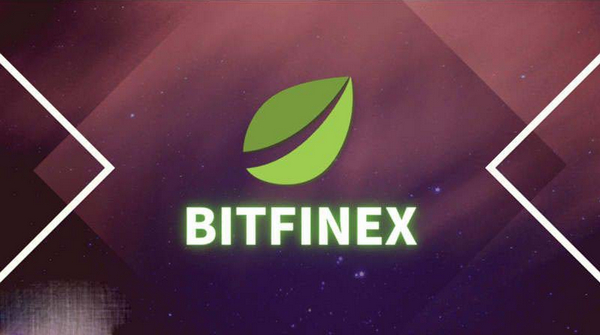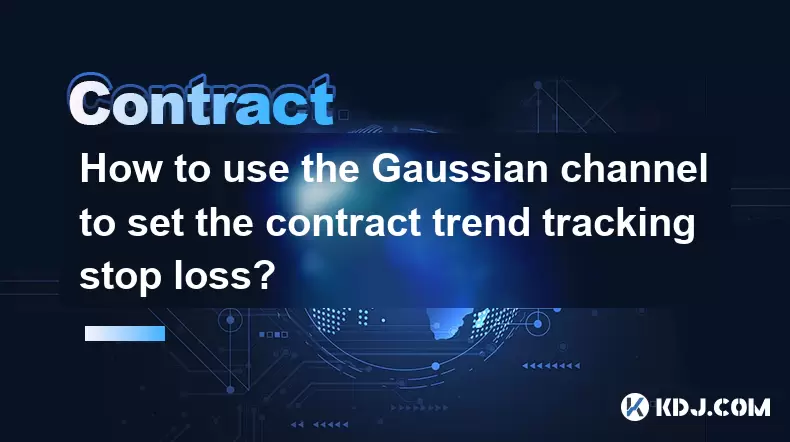-
 Bitcoin
Bitcoin $106,731.2224
-1.05% -
 Ethereum
Ethereum $2,444.9804
-1.20% -
 Tether USDt
Tether USDt $1.0003
0.01% -
 XRP
XRP $2.1882
0.09% -
 BNB
BNB $651.1435
-0.61% -
 Solana
Solana $148.3252
-2.09% -
 USDC
USDC $1.0000
0.01% -
 TRON
TRON $0.2787
0.55% -
 Dogecoin
Dogecoin $0.1598
-3.16% -
 Cardano
Cardano $0.5520
-2.43% -
 Hyperliquid
Hyperliquid $39.0960
-2.64% -
 Bitcoin Cash
Bitcoin Cash $516.9519
2.98% -
 Sui
Sui $2.7011
-2.95% -
 Chainlink
Chainlink $13.0582
-1.71% -
 UNUS SED LEO
UNUS SED LEO $8.9250
-2.53% -
 Stellar
Stellar $0.2359
-0.18% -
 Avalanche
Avalanche $17.3856
-3.73% -
 Toncoin
Toncoin $2.8095
-3.56% -
 Shiba Inu
Shiba Inu $0.0...01121
-1.95% -
 Litecoin
Litecoin $85.2795
-0.85% -
 Hedera
Hedera $0.1471
-2.15% -
 Monero
Monero $319.8004
1.12% -
 Dai
Dai $1.0001
0.01% -
 Ethena USDe
Ethena USDe $1.0001
0.02% -
 Bitget Token
Bitget Token $4.5344
-1.07% -
 Polkadot
Polkadot $3.3224
-2.96% -
 Uniswap
Uniswap $6.9697
-2.75% -
 Aave
Aave $266.1658
-2.25% -
 Pepe
Pepe $0.0...09414
-3.41% -
 Pi
Pi $0.4913
-3.29%
How to trade Bitfinex contract accounts How to open
Whether you're just starting out or looking to enhance your trading strategies, this comprehensive guide to Bitfinex contract accounts will equip you with the knowledge and tools you need to navigate this advanced platform.
Nov 20, 2024 at 01:10 pm

Comprehensive Guide to Trading Bitfinex Contract Accounts: An In-Depth Walkthrough
Navigating the world of cryptocurrency trading can be a daunting task, especially for newcomers. One of the key platforms in this space is Bitfinex, known for its advanced features and sophisticated trading tools, including contract accounts. This guide will provide a comprehensive overview of how to open and trade Bitfinex contract accounts, empowering you to unlock the potential of this platform.
Opening a Bitfinex Contract Account
Create a Bitfinex Account:
- Visit the Bitfinex website and click "Sign Up."
- Provide your email address, create a secure password, and agree to the terms of service.
- Verify your email address by clicking the link sent to your inbox.
Complete Identity Verification:
- To trade contract accounts, you must complete identity verification to comply with regulations.
- Upload a clear photo of your government-issued ID (passport or ID card).
- Provide proof of residency with a document such as a utility bill or bank statement.
Enable Contract Trading:
- Once verified, log in to your Bitfinex account and click on "Funding."
- Navigate to the "Account Permissions" tab and enable "Contract Trading."
- Review and accept the Contract Trading Agreement.
Funding Your Contract Account
Before you can start trading, you need to fund your contract account with sufficient capital.
Depositing Cryptocurrencies:
- Click on "Funding" and select "Deposits."
- Choose the cryptocurrency you wish to deposit and copy the provided deposit address.
- Send the desired amount from your external wallet or exchange to the provided address.
Converting Funds to USDt:
- Contract trades are denominated in USDt, so you may need to convert your deposited cryptocurrencies.
- Go to "Exchange" and select the trading pair for your deposited cryptocurrency (e.g., BTC/USDt).
- Place a market or limit order to convert your funds to USDt.
Understanding Contract Basics
Contract Specifications:
- Contracts are financial instruments that allow you to speculate on the future price of an underlying asset (e.g., Bitcoin).
- Bitfinex offers various contracts with different expiry dates, leverage options, and minimum trade sizes.
Margin and Leverage:
- Margin trading involves borrowing funds to increase your potential returns.
- Bitfinex provides margin loans, allowing you to leverage your positions with up to 100x leverage.
- Higher leverage amplifies both your profits and losses.
Long and Short Positions:
- You can take either long or short positions in contract trading.
- Going long means you believe the asset price will increase, so you buy the contract.
- Going short means you believe the price will decrease, so you sell the contract.
Placing Contract Orders
Accessing the Contract Trading Interface:
- Click on "Trade" and select "Contracts" in the top menu.
- Choose the desired contract and currency pair (e.g., BTC-PERP).
Selecting an Order Type:
- Bitfinex supports various order types, each with its own execution parameters.
- Market orders are executed immediately at the current market price.
- Limit orders allow you to specify a desired price at which your order will be executed.
- Stop orders are triggered when the asset price reaches a predetermined level.
Leverage Selection:
- If you wish to use leverage, select the desired leverage multiplier (e.g., 10x, 25x).
- Be aware of the risks associated with higher leverage.
Confirming Order Details:
- Review the order details carefully, including the order type, price, leverage, and quantity.
- Click on "Place Order" to execute your trade.
Managing Contract Positions
Open Positions:
- You can view your open positions in the "Positions" tab on the contract trading interface.
- Each position displays information such as entry price, leverage, and profit/loss.
Risk Management:
- It is crucial to manage risk effectively in contract trading.
- Use stop-loss orders to limit potential losses in case of unfavorable price movements.
- Monitor your positions regularly and adjust leverage or close trades as needed.
Profit and Loss Realization:
- Profits and losses are realized when you close your positions.
- You can either sell your contract (if long) or buy it back (if short) to close your position.
- The profit or loss is calculated based on the difference between your entry and exit prices.
Disclaimer:info@kdj.com
The information provided is not trading advice. kdj.com does not assume any responsibility for any investments made based on the information provided in this article. Cryptocurrencies are highly volatile and it is highly recommended that you invest with caution after thorough research!
If you believe that the content used on this website infringes your copyright, please contact us immediately (info@kdj.com) and we will delete it promptly.
- Crypto Rollercoaster: Bitcoin, Altcoins, and the Wild Ride Ahead
- 2025-07-02 07:10:16
- Meme Coins Mania: Arctic Pablo Leads the New Crypto Pack
- 2025-07-02 06:30:11
- Meme Coins on the Move: Arctic Pablo, Bone ShibaSwap, and the Quest for the Next Big Thing
- 2025-07-02 06:30:11
- Crypto ETF Approval: Grayscale's Win & the SEC Rule Change
- 2025-07-02 07:10:16
- Toncoin's Price Wobbles: Engulfing Candle Holds the Key?
- 2025-07-02 07:15:11
- Crypto ETFs: Navigating the US Market Path and SEC Considerations
- 2025-07-02 06:50:12
Related knowledge

How to use the price slope to filter the false breakthrough signal of the contract?
Jun 20,2025 at 06:56pm
Understanding the Concept of Price Slope in Contract TradingIn contract trading, especially within cryptocurrency derivatives markets, price slope refers to the rate at which the price changes over a specific time period. It helps traders assess the strength and sustainability of a trend. A steep slope may indicate strong momentum, while a shallow slope...

How to determine the expected volatility of the contract through the volatility cone?
Jun 19,2025 at 12:28pm
Understanding the Basics of Volatility in Cryptocurrency ContractsIn the realm of cryptocurrency trading, volatility is a key metric that traders use to assess potential risk and reward. When dealing with futures contracts, understanding how volatile an asset might become over time is crucial for position sizing, risk management, and strategy developmen...

How to formulate a contract intraday trading plan in combination with the pivot point system?
Jun 21,2025 at 03:42pm
Understanding the Basics of Pivot Points in Cryptocurrency TradingPivot points are technical analysis tools used by traders to identify potential support and resistance levels. These levels are calculated using the previous day's high, low, and closing prices. In the context of cryptocurrency trading, where markets operate 24/7, pivot points help trader...

How to adjust the contract position ratio through the price fluctuation entropy?
Jun 22,2025 at 11:42am
Understanding Price Fluctuation Entropy in Cryptocurrency ContractsIn the world of cryptocurrency futures trading, price fluctuation entropy is a relatively new concept used to measure market volatility and uncertainty. It derives from information theory, where entropy refers to the degree of randomness or unpredictability in a system. In crypto contrac...

How to use the volume swing indicator to predict the contract volume-price divergence?
Jun 18,2025 at 11:42pm
Understanding the Volume Swing IndicatorThe volume swing indicator is a technical analysis tool used primarily in cryptocurrency trading to evaluate changes in volume over time. Unlike price-based indicators, this metric focuses solely on trading volume, which can provide early signals about potential market reversals or continuations. The key idea behi...

How to use the Gaussian channel to set the contract trend tracking stop loss?
Jun 18,2025 at 09:21pm
Understanding the Gaussian Channel in Cryptocurrency TradingThe Gaussian channel is a technical indicator used primarily in financial markets, including cryptocurrency trading, to identify trends and potential reversal points. It is based on statistical principles derived from the normal distribution, commonly known as the Gaussian distribution or bell ...

How to use the price slope to filter the false breakthrough signal of the contract?
Jun 20,2025 at 06:56pm
Understanding the Concept of Price Slope in Contract TradingIn contract trading, especially within cryptocurrency derivatives markets, price slope refers to the rate at which the price changes over a specific time period. It helps traders assess the strength and sustainability of a trend. A steep slope may indicate strong momentum, while a shallow slope...

How to determine the expected volatility of the contract through the volatility cone?
Jun 19,2025 at 12:28pm
Understanding the Basics of Volatility in Cryptocurrency ContractsIn the realm of cryptocurrency trading, volatility is a key metric that traders use to assess potential risk and reward. When dealing with futures contracts, understanding how volatile an asset might become over time is crucial for position sizing, risk management, and strategy developmen...

How to formulate a contract intraday trading plan in combination with the pivot point system?
Jun 21,2025 at 03:42pm
Understanding the Basics of Pivot Points in Cryptocurrency TradingPivot points are technical analysis tools used by traders to identify potential support and resistance levels. These levels are calculated using the previous day's high, low, and closing prices. In the context of cryptocurrency trading, where markets operate 24/7, pivot points help trader...

How to adjust the contract position ratio through the price fluctuation entropy?
Jun 22,2025 at 11:42am
Understanding Price Fluctuation Entropy in Cryptocurrency ContractsIn the world of cryptocurrency futures trading, price fluctuation entropy is a relatively new concept used to measure market volatility and uncertainty. It derives from information theory, where entropy refers to the degree of randomness or unpredictability in a system. In crypto contrac...

How to use the volume swing indicator to predict the contract volume-price divergence?
Jun 18,2025 at 11:42pm
Understanding the Volume Swing IndicatorThe volume swing indicator is a technical analysis tool used primarily in cryptocurrency trading to evaluate changes in volume over time. Unlike price-based indicators, this metric focuses solely on trading volume, which can provide early signals about potential market reversals or continuations. The key idea behi...

How to use the Gaussian channel to set the contract trend tracking stop loss?
Jun 18,2025 at 09:21pm
Understanding the Gaussian Channel in Cryptocurrency TradingThe Gaussian channel is a technical indicator used primarily in financial markets, including cryptocurrency trading, to identify trends and potential reversal points. It is based on statistical principles derived from the normal distribution, commonly known as the Gaussian distribution or bell ...
See all articles

























































































